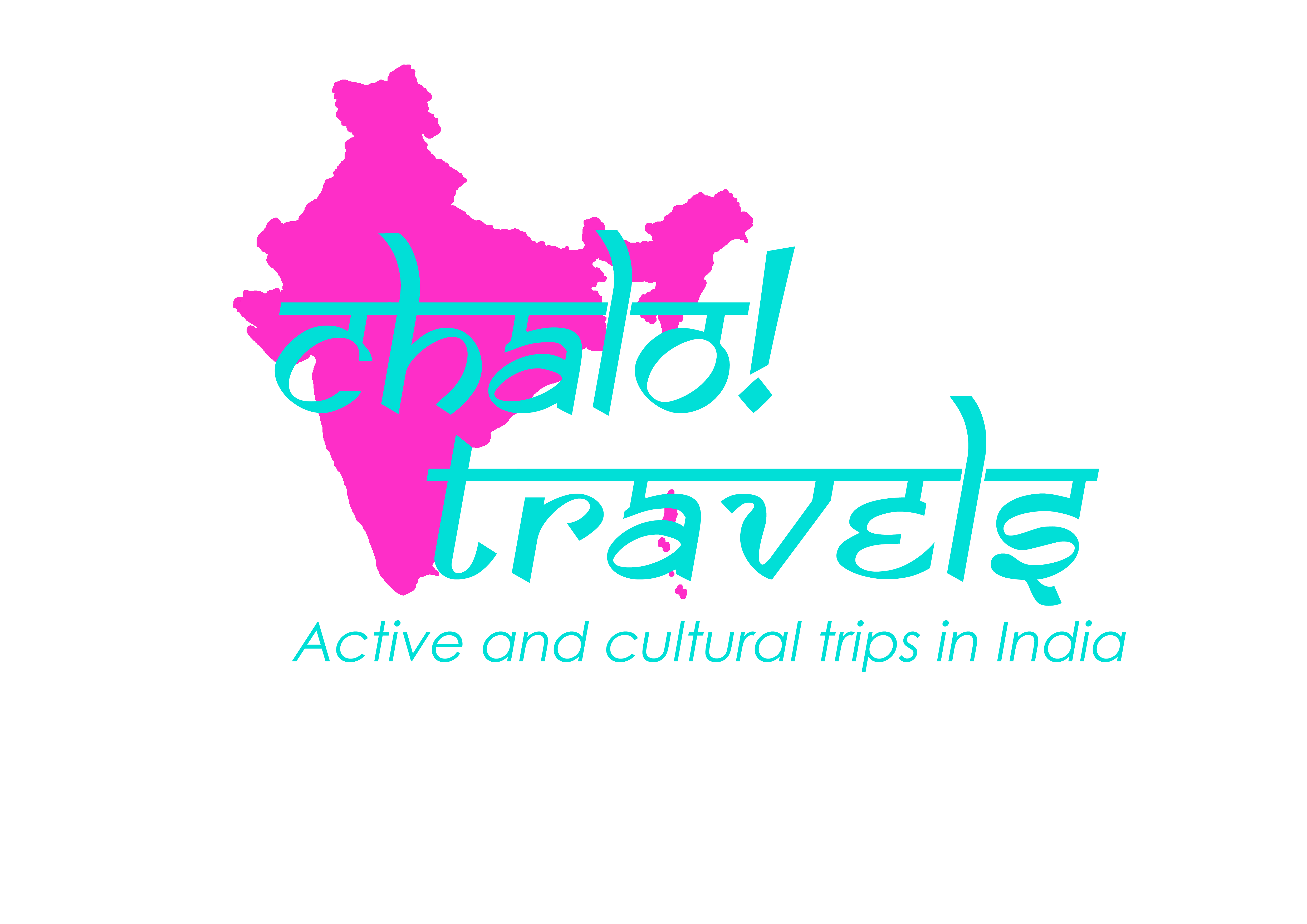After my one-week stay in the Andaman Islands, a group of islands in the Bay of Bengal, India has once again proven how diverse it is. Even a luxurious island vacation with dream beaches and crystal clear sea water is possible without leaving the borders of India.
The Andamans belong to the Indian Union Territory of Andaman and Nicobar Islands in the Andman Sea about 1300 km east of the Indian mainland and 300 km southwest of Myanmar, west of Thailand and north of Indonesia. A distinction is made between the North, Middle and South Andamans.
There are a total of 204 islands on 6405 km² with 340,000 inhabitants, of which almost 4,800 are indigenous.
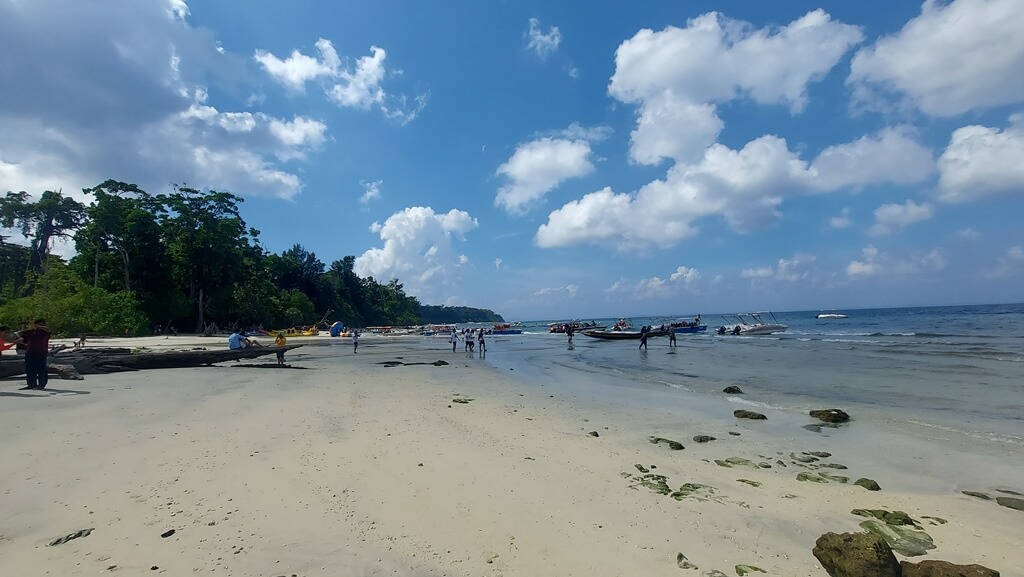
In the 1800 century the archipelago was occupied by the British. Initially as a naval base for the British East India Company, later together with the mainland as the Crown Colony of Great Britain.
Until World War II, the British used the islands as a penal colony for Indian political opponents with hard detention. Together with the prisoners who went on hunger strike, Mahatma Gandhi and Rabindranath Tagore made it possible for them to be released.
During the second world war the Andmanes were occupied by the Japanese.
There are still a few indigenous people of various tribes on the Andamans, whose ancestors came from Africa 500,000 years ago and settled the Andamans. Only the Sentinelese tribe still lives completely untouched by the modern world on their own island.
After the partition of India in 1948, many Hindus who lived in what is now Bangladesh were settled in the Andaman Islands.
For my first stay in the Andaman Islands, I decided to take the typical tourist route and, after landing in Port Blair, visit the paradise island of Havelock and her little sister Neil.
A visit to the northern part of the Andaman Islands is definitely planned for the next visit. This part seems to be a bit more original, with the possibility of a little more active hikes and getting to know the local population.
Due to a cyclone that rushed past the Andamans during the last few days of my trip, I and both of my companions were stuck one day longer on the small Neil Island, so the planned visit to Cellular Jail and a night kayak tour in the glowing plankton until the next Visit is postponed.
But here are twelve recommendations that will not only make your stay on the islands of Havelock and Neil a success, but also something very special – something opposite to the typical “India package tour program” that so many Indian honeymoon couples follow.
- Book a diving course or at least a few dives

In the first three days I completed my Padi Open Water course on Havelock and was able to get to know the underwater world for the very first time.
Havelock Island is ideal for diving and with more than 34 swap schools there is also a very large selection. With Dive India (courses with accommodation can also be booked through us) I have found a very good and renowned exchange school of the highest standard. The three- to four-day course costs around € 400, with the theoretical part being completed online in advance.
I was fortunate to have my private instructor Juju. A local and very experienced instructor. Every morning there were two dives with lots of exercises and a little more theory in between and in the evening. The first two days we dived from the bank, on the last day we went out by boat.
I am absolutely thrilled with my diving experience and will certainly keep this hobby after this course. I had a lot of fun learning something completely new!
The Andamans have great coral reefs and there is a colorful underwater world to experience.
2. Rent a bike or a moped

The two islands of Havelock and Neil are small enough that you can easily get anywhere by bike. The distance from one end of the road to the other is a maximum of 20 km. To the beautiful Radhanagar beach, however, there are a few short climbs without gears you may have to push or switch to a moped or rickshaw.
For me, the bike was a wonderful opportunity to travel independently to the beaches, to my diving courses and to various restaurants and to visit the villages a bit away from tourism.
3. Hike to Elephant Beach

Most tourists take the boat from the ferry to Elephant Beach. The only other option is a two to three kilometer hiking trail that often resembles a mud swamp due to the frequent downpours. I went on my little adventure to Elephant Beach early in the morning at 7:30 a.m. (officially only allowed from 8 a.m.) and had the great opportunity to follow local women who walk to the beach every day to sell their fruit there.
So I not only had a knowledgeable hiking guide, but also a very nice company! In addition, I reached the dream beach before all the other tourists who only arrived with the boats at around 9 a.m.
The Elephant Beach is perfect for snorkeling, you can continue running to Turtle Beach or book one of the many water sports activities! During the day the beach becomes a real water fun park!
In addition to all the offers, the “Seawalk” sounded interesting. Here you get a transparent ball on your head and walk on the seabed, where you can admire the underwater world in all its glory.
The beach closes at 5 p.m. Either you take a boat back to the harbor or you walk back again.
Attention: The hike to the beach is no longer allowed after 2 p.m.!
4. Beaches
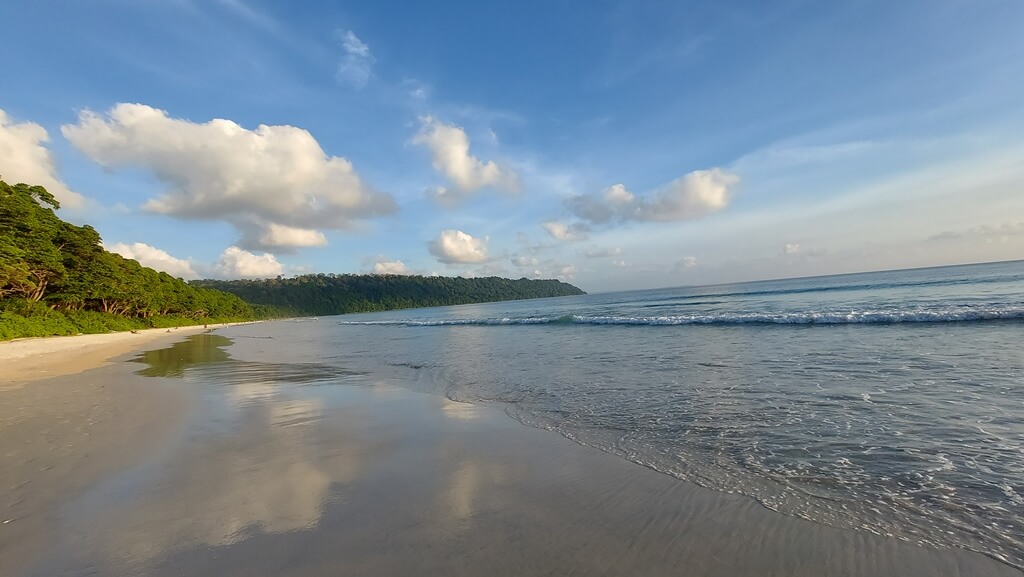
Radhanagar Beach is a dream beach and very popular for watching the sunset.
At this time the beach is really overcrowded! Better to visit the beach during the day and enjoy a swim in the crystal clear sea water!
Even against the flow of tourists, I would visit Khala Pattar Beach. It is the beach on the other side of the island and is famous for its sunrise. If you visit the beach in the afternoon you have the small beach a little more to yourself.
5. Daily rhythm

The Andaman and Nicobar Islands are very far east of mainland India – almost at the height of Thailand and Indonesia.
But the time zone is still the same as in all of India.
As a result, the sun rises very early at around 5 a.m. and then sets at 5 a.m. It’s best to adapt to this rhythm. For me this happened automatically.
6. Tuktuk ride through Neil Island

The little sister island of Havelock – Neil, is even smaller – about 10 km long and 5 km wide. In one day the island, which is even wilder and pristine, was well developed. Only those who love peace and quiet or come to Neil to dive stay longer. There is hardly any network or internet on Neil Havelock!
We really enjoyed being shown around by our rickshaw driver all day. As residents of the island, the drivers are very knowledgeable and also know when to be where – important because of the tides and sunrises and sets!
We particularly liked the area around the natural stone bridge. When the water level is low, small natural pools are created where you can marvel at living sea creatures and corals.
Otherwise, a morning run across the island is also great!
7. Neil Sunset Point on Lakshmanpur Beach 1
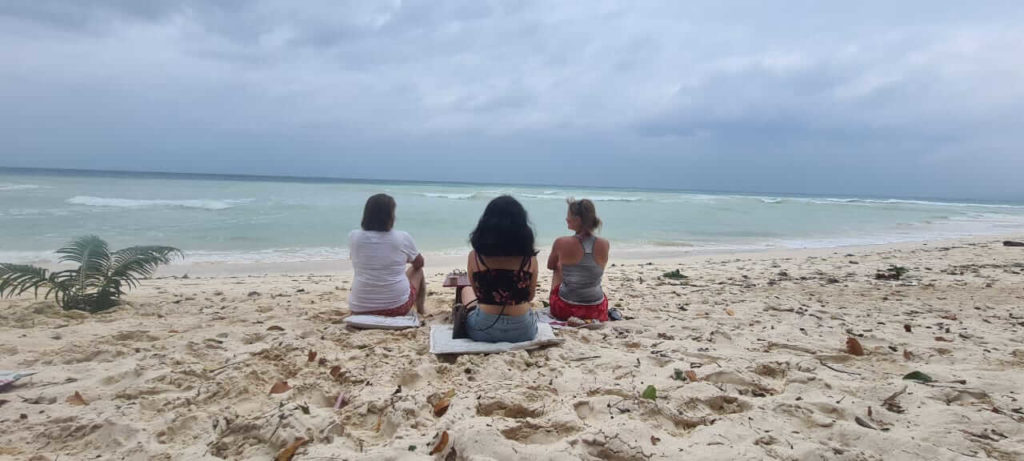
Even if I otherwise prefer to go against the flow of tourists, visiting Sunset Point at sunset is really worthwhile! On the wonderful sandy beach, the locals have set up small tables with cushions and invite you to grilled fish and drinks! A real holiday feeling arises here.
8. Emerald Gekho on Neil

This ecologically oriented bamboo resort on Sitapur beach is the right thing to enjoy the island of Neil in its simplicity and originality. In the middle of the green, almost directly on the beach, you live in small bamboo huts. Despite its simplicity, it has all the conveniences such as hot water, toilet paper and towels.
The delicious dishes are also really recommended!
9. State ferries

Admittedly, booking the state ferries directly on site can be a bit cramped when you have to queue up at the ticket counter early in the morning. But the ride on the Government Ferry is not only much cheaper, it is also much more interesting because you can also go out on deck.
The private ferries can be booked online in advance, they are faster and three times as expensive. You cannot go out onto the deck of the private Makruzz ferry.
10. Weather
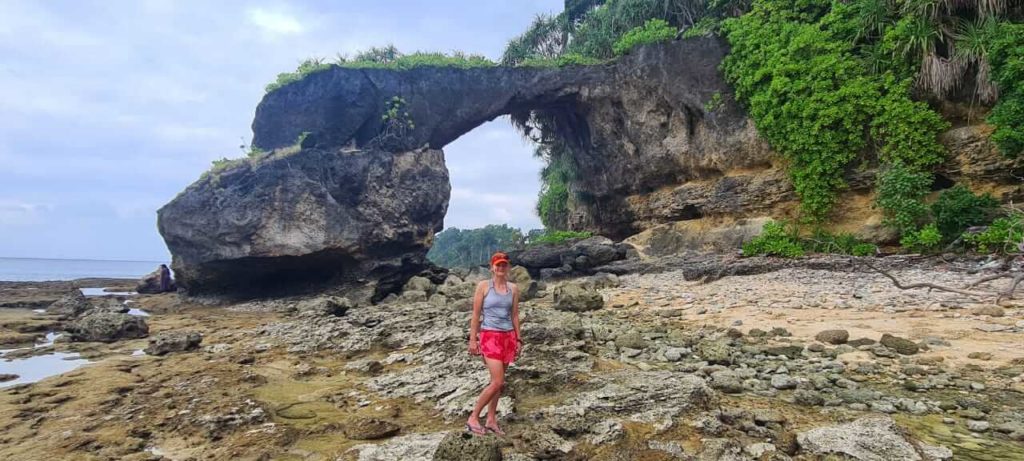
Before the trip I didn’t even know how much it rains on the Andamans! Only the months from December to March are a bit more rain-proof, but heavy showers are also not unusual! After all, we had the cyclone in December with heavy showers!
The Andamans get two monsoon rains, first the southwest and later the northeast monsoon.
You can still dive well in the rain, but all other “beach activities” are difficult. If there is also a storm, you can get stuck on the islands for a few days. Once again an experience
11. Friendly residents
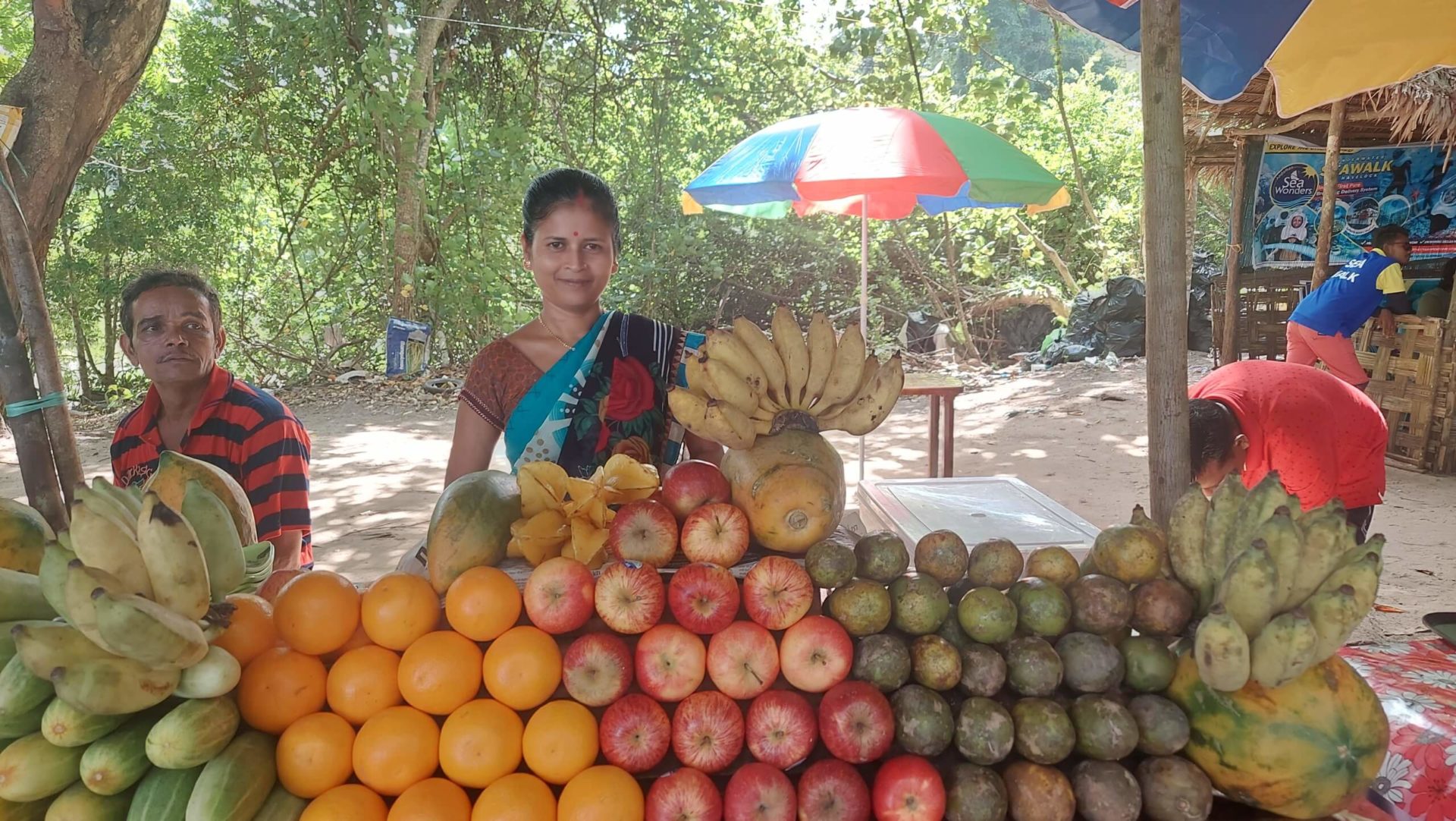
I have seldom seen such friendly people as on the Andamans! Everyone is ready to help, takes their time and is not out to exploit the tourist. On the contrary, I was often even given advice on how I could go about my business without a guide!
We were given selfless help in minor and major emergencies. So the local police were there for us when we were stuck on Neil and I immediately got a free tetanus shot from a friendly nurse at the health center after a small dog scratch. Action was almost never necessary!
12. Restaurants
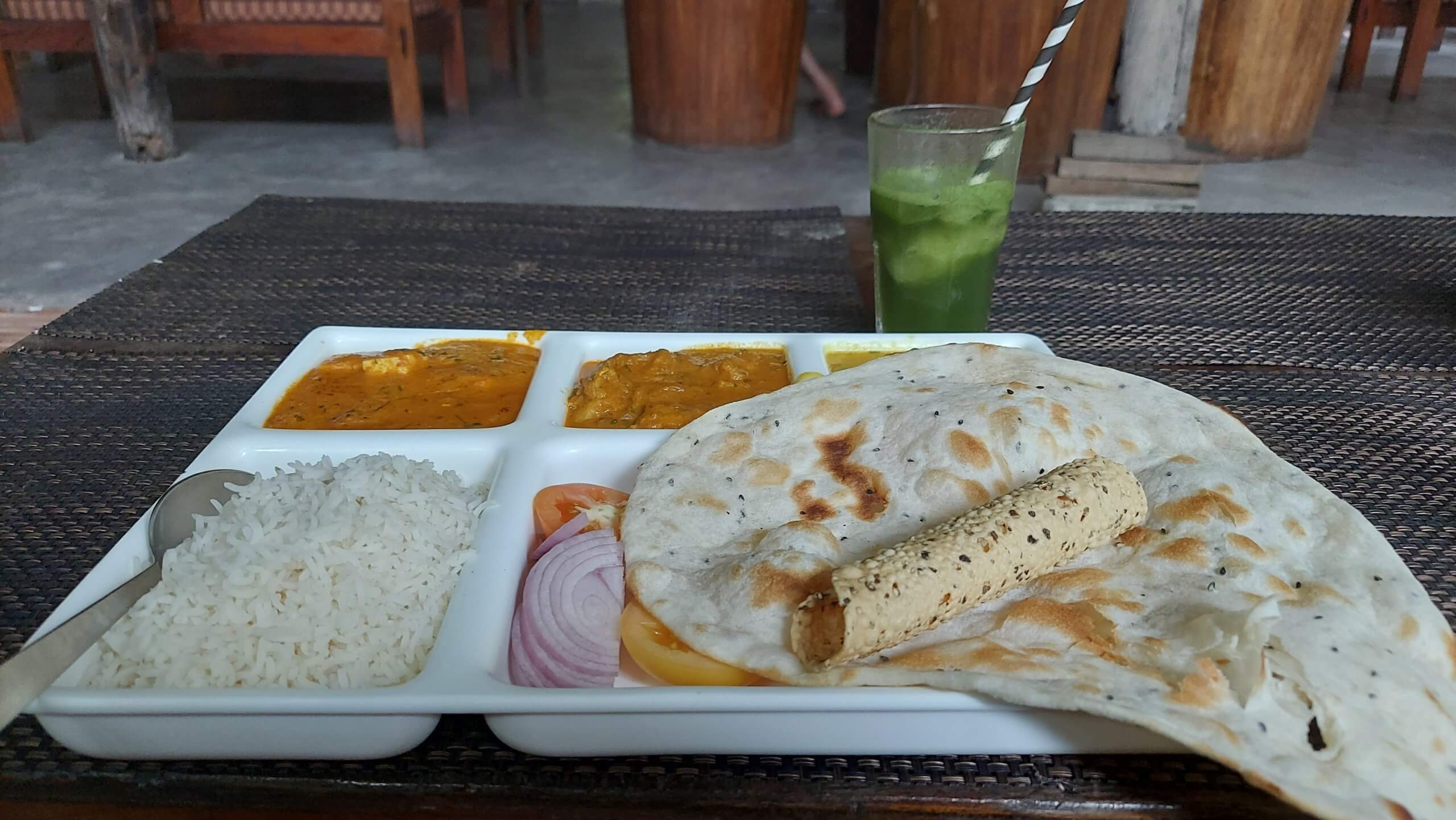
The food on the islands was very tasty, fresh, extensive and moderately priced everywhere. I could hardly name a restaurant that I didn’t like. Unlike in Goa, there is almost no restaurant right on the beach here. But they are all cozy and convince in terms of quality.
Of course, the fish and seafood are particularly good here, but the South Indian dishes are also excellent.
